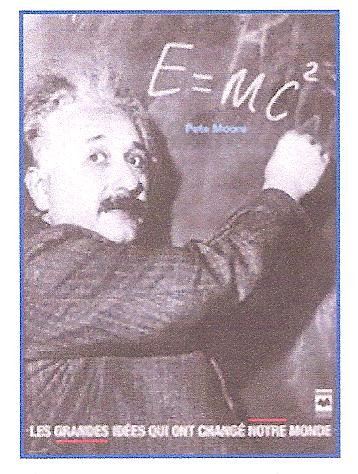The Fukushima disaster, which occurred in Japan in March 2011 following a violent tsunami, marked the spirits and led Japan to shut temporarily its nuclear power plants (without deciding about their future), while several European countries, Germany, Switzerland, Belgium and Italy, have renounced nuclear energy. France, however, is keeping its nuclear policy (but decided to lower its 50% share in electricity generation) which the United Kingdom has decided to restart in 2013 while China, after a short pause, continued its major program of reactor construction. Many prospective reports on the future of energy in the world assume an increase in the production of nuclear electricity by 2035. According to the « new policies » scenario of the IEA World Energy Outlook 2013 (IEA, www.iea.org ), the global installed capacity would increase by 75% in 2035 from 394 GW in 2012 to 578 GW (with 114 GW installed by China). The latest BP report on 2035 scenario « anticipates » an annual growth of 1.9% in nuclear generation by 2035 , provided mainly by developing countries such as China and India, but its share in the energy primary will not be progressing (5%) (BP Energy Outlook 2035, www.bp.com / content / dam / bp / pdf / Energy – economics / Energy – Outlook).
The future of nuclear power depends critically on its profitability and safety. In his recent book Nucléaire On / Off (Paris, Dunod, 2013), François Lévêque, Professor of Economics at the Ecole des Mines ParisTech , undertakes a comprehensive and non-partisan review of the economy and safety of nuclear power in France and worldwide. It shows that the calculation of the cost of producing a nuclear MWh requires consideration of several data: investment costs, the discount rate for capital investment costs, fuel (weak), waste storage and the decommissioning of the reactors, the impact of measures to enhance their security (after Fukushima) and finally the financial responsibility in case of accident (who will pay any damage?) . The French Court of Auditors had estimated at 40 € / MWh the production cost of nuclear energy in France (excluding the cost of decommissioning, Court of Auditors, Les coûts de la filière nucléaire, La Documentation française, Paris 2012, www.ccomptes.fr ) but according to F.Lévêque , there is not “one” but several nuclear costs which vary from one country to another, as illustrated by the controversy over the construction costs of the EPR in France at Flamanville (it will be about € 8.5 billion), in Finland and China (where it seems that the initial quote will be respected). Nuclear seems to suffer from a « curse » of rising costs with prices climbing for kW building, the more recent reactors having heavier building cost than the first ones, being their highest level of safety and the fact that plants do not benefit enough series effect to offset their costs on a great deal of reactors. In France, EDF increased stepwise the powers of its reactors small series, the construction cost of the last ones connected to the grid in the early 2000s , those of Chooz and Civaux, are estimated at € 1450 / kW (China who is building many reactors might benefit from series effect). The competitiveness of nuclear energy on the long term will probably not improve, but the cost per kWh produced by the renewable energy sectors (wind and solar), which are intermittent sources, is also marred by uncertainty and varies greatly from one country to another . Ultimately, the cost of electricity will depend on several parameters, the price of CO2 (with emission quota) is a major unknown as if it were substantially increased, it would strongly penalize gas and coal plants which, today, are the most competitive for power generation . The future electricity will probably be a “mix”: renewable but intermittent renewable energy (which are unable facing peak-hour demand), a basis with nuclear plants, gas plants and hydroelectricity.
. Ultimately, the cost of electricity will depend on several parameters, the price of CO2 (with emission quota) is a major unknown as if it were substantially increased, it would strongly penalize gas and coal plants which, today, are the most competitive for power generation . The future electricity will probably be a “mix”: renewable but intermittent renewable energy (which are unable facing peak-hour demand), a basis with nuclear plants, gas plants and hydroelectricity.
« Calculating » the risk of a major nuclear accident is not an easy exercise as it requires a probabilistic risk assessment of accident by examining precisely a « tree » of events that may lead to a major accident as the melting of the reactor core (a frequency of five accidents per 100 000 years of operation of a reactor according to most estimates), possibly with radioactive emissions in the environment, like in Chernobyl and Fukushima, which may have a serious health impact. According to F. Lévêque, probability safety studies have made great progress, they can detect weak points in a type of reactor, a task that requires to imagine multiple scenarios (the possibility of a violent tsunami with a total destruction of power supply had not been taken into account in Fukushima). He also stressed that the public often has a skewed perception of probabilities and thus about the risk of accidents, the perceived probability being greater than the calculated one, probably for psychological reasons. Whence a daunting question: should the policymaker on an issue like nuclear power make his decision on the basis of the probability calculated by the experts (F.Lévêque favors this solution) or on that one perceived by the public ? Nuclear safety demands total independence of the National Safety Authority. Fukushima has highlighted the bankruptcy of the Nuclear Safety Authority of Japan which had no independence from the Administration and industry (breaches to its recommendations were not sanctioned). In France, the ASN ( Autorité de Sûreté Nucléaire) and in the U.S.A the NRC (Nuclear Regulatory Commission) enjoy genuine independence and if the French and American approaches to security are different, they may be considered, according to F.Lévêque, as efficient. Related to nuclear safety remains the question of liability in case of a serious accident to which it has been yet provided a satisfactory answer (in France EDF’s liability is capped).
Is it possible to consider other generations of reactors to improve the competitiveness of nuclear power? The answer to this question is not obvious. The third-generation reactors, the EPR under construction, should improve safety with higher power and better performance (1600 MW reactors operating at a higher temperature with a better utilization of fuel) and should be a competitiveness factor, but as the first series, they will very probably deliver a kWh at a higher cost (70 € / MWh ?). Another solution would be to build reactors of average power (in a range from 200 to 1000 MW ) which are less capital intensive, a solution which is being considered by Babcock & Wilcox, an American manufacturer, who is working on a model of 180 MW reactor (Kevin Bullis » Can small reactors ignite a nuclear renaissance ? » MIT Technology Review, March 28, 2013, www.technologyreview.com ). These solutions, interesting for developing countries, will only survive if their economic viability is proven with draconian security conditions (most of developing countries having no security « culture »).
Thermonuclear fusion that we mentioned repeatedly is a second path to nuclear. For the time being the bet is placed with the international ITER tokamak (a plasma confinement in very high magnetic fields), under construction in Cadarache in France, which continues on its way (currently estimated at a total cost of 16 billion euros) but results are not expected until 2027 (a total thermal power output about 500 MW). Project management is difficult because various components of the reactor manufactured around the world will need to be assembled. There are two alternatives to tokamaks. The first is the inertial confinement where the onset of melting is initiated by powerful lasers. If one could get the initial fusion in the plasma, one is still unable to maintain it in order to produce ignition (self-sustaining fusion). The second way is to trigger fusion by powerful electric discharges in the plasma which induce a very strong magnetic field compressing the plasma which has been elevated to high temperature by laser. Machine Z (Sandia Laboratory in the USA) has been able to produce a large number of fusion neutrons last year (WW Gibbs, » Triple Threat method sparks hope for fusion », Nature, vol.505 , p.9 , 2 January 2014, www.nature.com ). Whatever the technique, thermonuclear fusion is still far away on a path full of hazards.
We must observe to conclude that if nuclear energy is for a long time installed on the planet, allowing a relative energy independence, it is a risky bet because the economic cost per kWh of electricity remains marred by uncertainties. Furthermore, the emergence of a nuclear club (with States wishing to develop nuclear energy) requires international governance of security which is far from existing. This is a debate that we cannot dodge.
